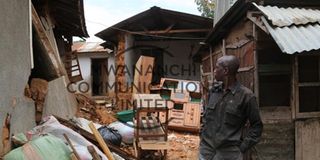‘Red tape’ hurts intervention efforts in Kagera earthquake

What you need to know:
The slow pace at which authorities responded to the September 10, earthquake which hit Kagera has raised concerns among relief agencies on the ground, politicians and members of the media who suggest that swift action could have reduced misery and untold suffering of the survivors.
Bukoba. Lack of concrete data and accurate information on the extent of devastation of the recent earthquake in Kagera Region is a major factor behind poor coordination of relief operations.
The slow pace at which authorities responded to the September 10, earthquake which hit Kagera has raised concerns among relief agencies on the ground, politicians and members of the media who suggest that swift action could have reduced misery and untold suffering of the survivors.
Tanzania Red Cross Society (TRCS) regional coordinator Robi Wambura, whose agency was first on the ground after the disaster struck a fortnight ago, said that humanitarian efforts were frustrated by the lack of a clear assessment on the extent of devastation.
“It has been difficult to set priorities as we distribute aid. Some residents think that we have even withdrawn support in some areas. But that’s not the case. We decided to re-direct aid to other areas after realising that there were pressing needs there,’’ she said.
TRCS has so far delivered relief aid to at least 2,000 households in Bukoba Municipality but up to Friday the humanitarian agency was still faced with the dilemma as to where to intervene due to the lack of clear data and accurate information on the most vulnerable households.
“If the disaster committee had immediately profiled the region and set up a one-stop centre for data and information on those affected, there wouldn’t have been complaints from people who say they have been left out in the relief efforts,’’ added Ms Wambura in an interview with The Citizen on Saturday.
“We also want to know who are more vulnerable. Our plan as TRCS is to start using data from the Tanzania Social Action Fund (Tasaf) to establish those who are most vulnerable.”
Regional authorities say the total number of people affected by the disaster is estimated to be 126,000. At least 16,667 houses were either damaged or completely destroyed and 9,471 developed partial cracks.




